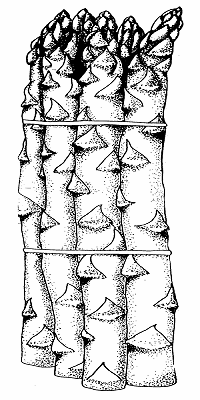By Rebecca Jepsen
Plants such as rhubarb and asparagus can be planted now through February
Besides putting up all those holiday decorations and doing that frenzied shopping, carve out some time to plant a few bare root edibles. They will bring you tasty gifts for many years to come.

Bare root plants are plants that go dormant during the winter and can be dug up and stripped clean of all soil, leaving their roots completely bare. They can then easily be propagated and transplanted.
Many vegetables and berries do best when planted during the winter. Those include artichokes, asparagus, grapes, strawberries, raspberries, blackberries and rhubarb. Fruit trees, including apples, apricots, cherries, figs, pears, nectarines, peaches and plums also do very well when planted in their bare root form.
The best time to plant is from late December through February.
I grew up in the Midwest where rhubarb seemed to grow wild around every corner. It came up every year around our chicken coop, along side of the garage, and even, much to my Mom's chagrin, throughout most of our flowerbeds.
There is truly nothing better than a homemade rhubarb pie, so I am going to give growing rhubarb a go this year.
Rhubarb grows best where winter temperatures drop below 40 degrees, and if recent temperatures are an indicator, this is my year.
Local favorites include Victoria, Crimson Cherry, Glaskin's Perpetual and MacDonald.
Mature plants can reach 4 feet in diameter; roots and leaves are toxic, so be sure to find a space out of reach of pets that love to chomp on plants. Plant rhubarb at 3 to 4 feet apart in an area that gets morning sun or partial shade.
Dig a large hole, place roots about 2 inches deep and tamp the soil down around roots. Keep it loose around the bud, however. Soil should be well-draining and amended with organic matter such as composted manure.
Don't harvest the first year, but do remove the flowering stalks in order to push energy to the roots. You can harvest sparingly in the spring of the second year and cut stalks to ground level.
Rhubarb is a heavy feeder so apply a high-nitrogen organic food such as worm castings, blood meal or grass clippings in June and keep the weeds away year-round.
I am also going to do my first-ever asparagus trial this year. Asparagus, once established, can keep on giving for up to 20 years. Avoid varieties that have been bred for the hot and humid summers and extremely cold winters of the East Coast such as Mary Washington and Jersey Giant.
UC Davis has developed several hybrids that work well in our mild climate: UC 157 F1, Atlas F1, Apollo, Grande and Purple Passion.
Asparagus needs full sun and well-draining soil that has been conditioned with peat moss, straw, green manures or leaf mold. Growing in raised areas or hillsides works great.
Overly wet areas will encourage disease and root rot. When planting, dig a trench 8 to 12 inches deep, mix fertilizer into the bottom and cover with 2 inches of soil. Plant asparagus crowns with the bud ends up, about 12 to 18 inches apart and cover with another 2 inches of soil. Gradually add more soil as the plants grow. Space rows 4 to 5 feet apart.
It is best to wait until the second year before harvesting. By the fourth year, plants should be in full production.
Source: ucanr.edu